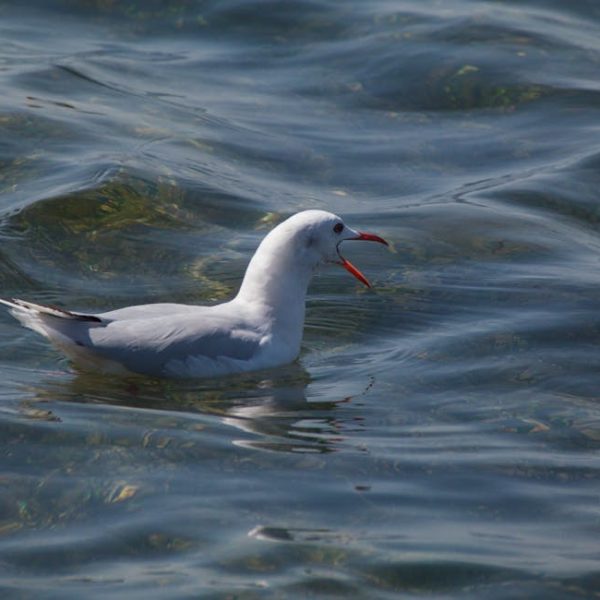Birds migrate south during winter mainly for survival, following a pattern that has been embedded in their genetics for generations. Navigation through vast distances, enduring changing weather patterns, and various physiological adaptations are part of this complex, instinct driven process.
The Reason Behind Bird Migration
Birds, like all organisms, are driven by survival. Migration is a part of that survival instinct. As resources become scarce in colder regions during winter, birds fly south where food is more abundant. This ensures their survival as well as the success of their future generations. Some bird species also migrate to find suitable breeding grounds or to escape habitat disturbances.
- Necessity for food
- Breeding patterns
- Habitat suitability
Moreover, certain bird species have developed unique migration habits. For instance, some birds, like hummingbirds, undertake a solo migratory journey, while others move in vast flocks.
How Weather Patterns Impact Bird Migration
Bird migration, although mostly driven by seasons, is greatly influenced by weather patterns. They use wind currents to their advantage for energy-efficient travel and to dodge adverse weather conditions like storms or heavy rain. By following the predictability of weather patterns, they are able to optimize their migration strategy.
Best Practices: Studying bird migration patterns can provide insight into changes in climate patterns and ecosystem health. For example, shifts in migration routes or timing can be indicative of changes in regional climates.
During migration, birds typically use weather patterns as follows,
- Fly at heights to catch beneficial wind currents.
- Take rests during harsh weather conditions.
- Avoid regions prone to unpredictable weather conditions.
The Role of Geographical Landmarks in Bird Migration
Birds also use geographical landmarks to orient themselves during migration. This can include major landforms such as mountain ranges, coastlines, rivers, and even human-made structures. Certain bird types prefer certain landmarks, for example, some species follow coastlines while others navigate by following river paths.
When it comes to sky landmarks, some birds are also known to navigate using stars, sun, and even the Earth’s magnetic field. The variety of tools birds use to find their way during migration is a testament to their incredible adaptability and instinctive geo-mapping skills.
Physiological Adaptations in Birds for Winter Migration
To endure such long, strenuous journeys, birds have developed certain physiological adaptations. They have long, pointed wings that reduce drag, and a high fat storage capacity that serves as energy reserves during the flight. Other adaptations include a highly efficient respiratory system and a specialized blood circulation system to withstand high-altitude travel.
- Long, pointed wings for reduced drag
- High energy storage capacity
- Efficient respiratory system
- Specialized blood circulation system
These unique adaptations allow birds to fly thousands of kilometers non-stop in some cases. Loss of these unique habitats due to human activities underscores the urgent need for their conservation.
Finally, as we delve deep into the threats faced by birds during migration and the efforts being undertaken to protect them, we can better understand our role in ensuring their survival. The protection of migratory birds is a responsibility shared by all.
Threats and Conservation Efforts for Migrating Birds
Migration is an arduous process and migrating birds face numerous threats. These stem from diverse causes such as climate change, habitat loss (both nesting grounds and stopover sites), and human-made barriers like tall buildings, wind farms, and power lines. Predation by invasive species is another threat. Different stages of migration expose birds to different hazards, hurting their survival rates, breeding success, and consequently, overall populations.
- Habitat loss
- Climate change
- Human-made structures
- Invasive predatory species
Protection of these migratory birds requires concerted effort. Awareness about their plight should be broadly disseminated. It’s also critical to protect habitats along their migratory route, reducing the challenges they face during their journey. The establishment of protected areas, habitat restoration, proper management of outdoor lighting, and legislation aimed at minimizing the threats to birds can all play a crucial role in their conservation.
Best Practices:
- Create public awareness about bird migration and their threats
- Establish protected areas along migratory routes
- Restoration of degraded habitats
- Minimize outdoor lighting during migratory seasons
- Enact laws to reduce human-induced threats
Observing and appreciating the wonders of bird migration is one thing; acting to preserve these beautiful creatures is another. The existence of migratory birds and their ability to undertake their remarkable journey year after year is a signal of a healthy and balanced ecosystem. Let’s ensure it stays that way.
Key Takeaway:
- Birds migrate south during winter in response to availability of resources, changing seasons and breeding patterns, which is largely driven by their survival instinct.
- The journey of migrating birds is influenced by weather patterns that birds use to their advantage as well as geographical landmarks and celestial objects used for navigation.
- Birds have physiological adaptations such as long, pointed wings and high fat storage capacity, among others, that help them endure long migration journeys.
- There are numerous threats to migrating birds like climate change, habitat loss and human-made barriers, which have sparked various conservation efforts for their protection.
Bird-watching enthusiasts and nature lovers will find the science behind bird migration fascinating. The adaptability and stamina of these feathered creatures is awe-inspiring, reminding us of the complexity and beauty of the natural world. As we appreciate this natural spectacle, it is essential to remember our unique role in preserving their habitats and ensuring their survival.
FAQs
Q: What happens if a bird’s migration route is interrupted or damaged?
A: If a bird’s migration route is interrupted or damaged, it could lead to the bird getting lost, unduly exhausted, or even death. This is why it’s crucial to protect their habitats and migratory routes.
Q: How do young birds know the migration route?
A: It’s fascinating that many young birds instinctively know their migration routes, likely due to inherited genetic instructions. In some species, the young birds learn the route by following older, experienced birds.
Q: How do birds prepare for migration?
A: Prior to setting off on their migration journey, birds usually accumulate fat reserves, which serves as their source of energy. Some also change their feathers to be better equipped for the long flight.
Q: How can I help with conservation efforts?
A: You can contribute to bird conservation efforts by creating bird-friendly spaces in your garden, reducing usage of harmful pesticides, participating in bird counts, supporting local bird conservation organizations or even advocating for bird protection laws.
Q: Are there specific times during the day when birds migrate?
A: Birds can migrate at any time, day or night. However, many prefer to migrate at night when the air is cooler and calmer, and there are fewer predators.
We appreciate your interest in the fascinating phenomenon of bird migration. Feel free to share this article and explore more posts on our website for more interesting facts about the natural world.












